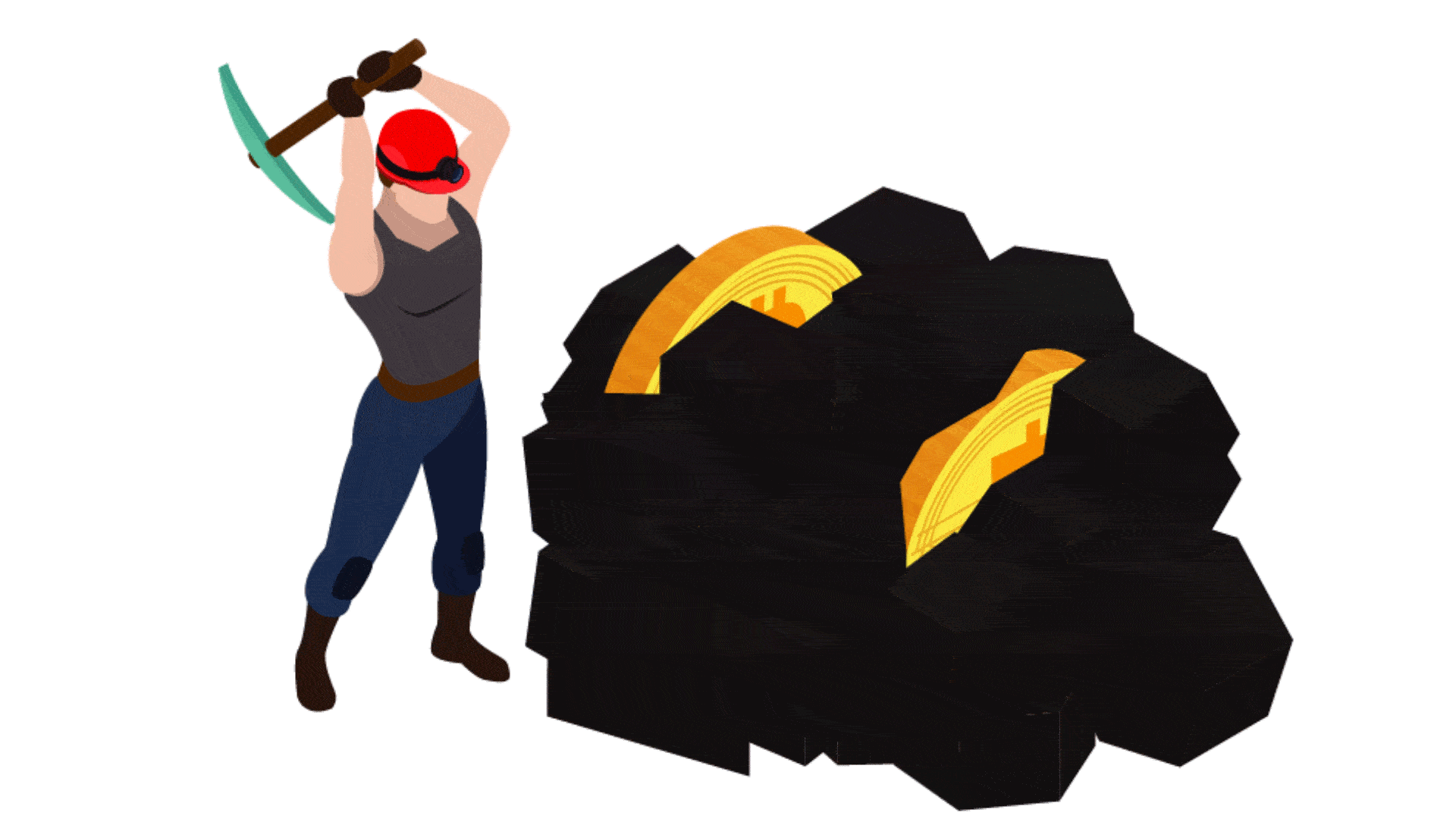What Is Cryptocurrency: A 21st-Century Unicorn or the Future Money?
- Cryptocurrency is an internet-based medium of exchange that conducts financial transactions using cryptographic processes.Blockchain technology is used by cryptocurrencies to provide decentralization, transparency, and immutability.
- The most essential attribute of a cryptocurrency is that it is not governed by a single entity: the blockchain’s decentralized nature makes cryptocurrencies potentially resistant to government control and interference.
- Private and public keys can be used to send cryptocurrency directly between two parties. Users can avoid the high fees charged by traditional financial institutions by transferring funds with minimum processing expenses.
Cryptocurrencies have become a worldwide phenomenon that most people are aware of. We’ll tell you everything you need to know about cryptocurrencies and the massive changes they can bring to the global economy in this tutorial.
Today, it’s difficult to find a major bank, a large accounting firm, a well-known software company, or a government that hasn’t studied cryptocurrencies, published a paper on the subject, or launched a so-called blockchain project.

“Virtual currencies, perhaps most notably Bitcoin, have captured the imagination of some, struck fear among others, and confused the heck out of the rest of us.”
– Thomas Carper, US-Senator
But beyond the noise and the press releases the overwhelming majority of people – even bankers, consultants, scientists, and developers – have very poor knowledge about cryptocurrencies. They frequently struggle to grasp even the most basic concepts.
So let’s have a look at the entire story. What are cryptocurrencies and how do they work?
How cryptocurrency works?
Cryptocurrencies were created as a byproduct of another invention, which few people are aware of. Satoshi Nakamoto, the anonymous creator of Bitcoin, the world’s first and most valuable cryptocurrency, never meant to create a money.
Satoshi said he built “A Peer-to-Peer Electronic Cash System” when he announced Bitcoin in late 2008.
His goal was to invent something; many people failed to create before digital cash.
Announcing the first release of Bitcoin, a novel electronic cash system that prevents double-spending by using a peer-to-peer network. There is no server or central authority, so it is fully decentralized. – Satoshi Nakamoto announced Bitcoin on SourceForge on January 9, 2009.
The most significant aspect of Satoshi’s invention was his discovery of a mechanism to create a decentralized digital cash system. Many attempts to establish digital money were made in the 1990s, but they all failed.
…they consider it as a lost cause after more than a decade of failing Trusted Third Party based systems (Digicash, etc.). I hope they understand that this is the first time I’m aware of that we’re experimenting with a non-trust based approach. ― Satoshi Nakamoto to Dustin Trammell in an e-mail
Satoshi attempted to create a digital monetary system without a central entity after watching all previous centralized attempts fail. Like a file-sharing peer-to-peer network.Cryptocurrency was born as a result of this choice. They are the missing piece Satoshi discovered in order to create digital money. The reason behind this is a little technical and complicated, but once you understand it, you’ll know a lot more about cryptocurrencies than the average person. So, to make it as simple as possible, here’s what we’ll do:
A payment network with accounts, balances, and transactions is required to make digital cash a reality. That’s not difficult to grasp. Preventing so-called double spending, which occurs when one entity spends the same amount twice, is a critical issue that any payment network must address. This is usually handled by a central server, which keeps track of the balances.
You don’t have this server in a decentralized network. As a result, you’ll need every single network entity to complete this task. Every peer in the network should have a list of all transactions so that future transactions may be checked to see whether they are valid or if they are an attempt to double spend.

But how can these organizations come to an agreement on these records?
Everything is broken if the network’s peers disagree about a single minor balance. They want complete agreement. Typically, a central authority is used to declare the correct state of balances. But, without a centralized authority, how can you reach consensus?
Nobody was aware of Satoshi’s existence until he appeared out of nowhere. Nobody thought it was conceivable in the first place.
Satoshi demonstrated it to be true. His significant contribution was the ability to achieve consensus without the use of a centralized authority. Cryptocurrencies are a part of this solution – the part that made it exciting, engaging, and allowed it to spread around the globe.

What is cryptocurrency?
When you strip away all of the hype around cryptocurrencies and boil it down to its most basic components, you’ll see that it’s nothing more than a set of limited entries in a database that no one can alter without meeting certain criteria. This may appear mundane, but believe it or not, this is exactly how a currency might be defined. Take your bank account balance: What is it if not records in a database that can only be modified under certain circumstances? You can even bring physical coins and bills with you: What are they if not restricted entries in a public physical database that can only be modified if you match the state of the coins and notes that you physically own? A confirmed entry in some form of database of accounts, balances, and transactions is what money is all about.
To give a proper definition, cryptocurrency is an internet-based means of exchange that conducts financial transactions using cryptographic processes. Blockchain technology is used by cryptocurrencies to provide decentralization, transparency, and immutability.
Miners’ methods for creating currencies and verifying transactions
Let’s take a look at the system that governs cryptocurrency databases. A cryptocurrency, such as Bitcoin, is made up of a peer-to-peer network. Every peer has a comprehensive record of all transactions and, as a result, the balance of each account.
A transaction is a file signed by Bob’s private key that reads, “Bob gives X Bitcoin to Alice.” It’s just standard public key cryptography, nothing extra. A transaction is broadcasted on the network when it has been signed, and it is sent from one peer to every other peer. This is the foundation of peer-to-peer technology.

Blockchain and Cryptocurrency
The entire network is nearly instantly aware of the transaction. However, it is only validated when a certain amount of time has passed.
In the world of cryptocurrency, confirmation is a crucial term. Cryptocurrencies, in a sense, are all about confirmation.
A transaction is pending and can be faked as long as it is unconfirmed. A transaction is finalized once it has been confirmed. It’s no longer forgeable, and it can’t be reversed; it’s now part of an immutable record of past transactions, known as the blockchain.
Transactions can only be confirmed by miners. In a cryptocurrency network, this is their duty. They take transactions, stamp them as legitimate, and then disseminate them around the network. Every node must add a transaction to its database after it has been confirmed by a miner. It has been incorporated into the blockchain.
Miners are compensated with a cryptocurrency token, such as Bitcoins, for their efforts. We should take a closer look at the miner’s activity because it is the single most crucial aspect of the bitcoin system.
What is cryptocurrency mining?
Everyone has the potential to be a miner. Because a decentralized network lacks the authority to delegate this responsibility, a cryptocurrency must have a mechanism in place to prevent one dominant party from exploiting the system. Consider the scenario when someone generates thousands of peers and distributes falsified transactions. The system would quickly fail.
As a result, Satoshi established the rule that miners must put in some effort on their computers in order to be considered for this assignment. In fact, they must find a hash – the result of a cryptographic procedure – that links the new block to the previous one. This is referred to as a Proof-of-Work. The SHA 256 Hash algorithm is used in Bitcoin.
You don’t need to know everything about SHA 256. It’s simply necessary to be aware that it could form the basis of a cryptologic puzzle that miners compete to solve. A miner can create a block and add it to the blockchain after finding a solution. He has the option of adding a so-called coinbase transaction that provides him a particular quantity of Bitcoins as a reward. The only way to make legitimate Bitcoins is to do so this manner.
Miners must solve a cryptographic puzzle in order to create bitcoins. Because the difficulty of this problem raises the amount of computer power invested by all miners, only a certain number of cryptocurrency tokens may be created in a given amount of time. This is an element of the network’s consensus that no peer can break.
Understanding cryptocurrency properties
- Irreversible: A transaction cannot be reversed once it has been confirmed. By no means. Nobody means nobody, by the way. You, your bank, the president of the United States, Satoshi, and your miner are not among them. Nobody. You send money if you want to send it. Period. If you gave money to a scammer or a hacker stole it from your computer, no one can help you. There is no such thing as a safety net.
- Pseudonymous: No real-world identities are linked to transactions or accounts. Bitcoins are sent to you using so-called addresses, which are 30 character chains that appear to be generated at random. While it is normally possible to monitor transaction flow, it is not always viable to link users’ real-world identities to their IP addresses.
- Fast and global: Transactions are broadcast over the network almost instantly and confirmed in a few of minutes. They are absolutely unaffected by your actual location because they take place in a global network of computers. It makes no difference whether I give Bitcoin to my next-door neighbor or to someone on the other side of the globe.
- Secure:Cryptocurrency funds are secure because they are stored in a public key cryptography scheme. Cryptocurrency can only be sent by the owner of the private key. This system is impossible to break due to strong encryption and the magic of large numbers. The security of a Bitcoin address exceeds that of Fort Knox.
- Permissionless:You don’t need to ask anyone’s permission to utilize cryptocurrency. It’s merely a piece of software that anyone can get for free. You can receive and transmit Bitcoins and other cryptocurrencies once you’ve installed it. Nobody can stop you. There is no such thing as a gatekeeper.

What is Cryptocurrency: Monetary properties
- Limited supply: The supply of tokens in most cryptocurrencies is limited. The supply of Bitcoin diminishes over time and will reach its maximum around the year 2140. A schedule defined in the code controls the supply of tokens in all cryptocurrencies. This means that the monetary supply of a cryptocurrency at any point in the future can be calculated roughly now. It’s not surprising.
- No debt but bearer: Your bank account’s Fiat-money is created by debt, and the figures on your ledger are nothing but debts. It’s an IOU system. Cryptocurrencies do not represent obligations; instead, they represent the value of the currency itself.
Both features must be considered in order to comprehend the revolutionary influence of cryptocurrencies. Bitcoin, as a permissionless, irreversible, and pseudonymous form of payment, is a direct challenge to banks’ and governments’ control over their citizens’ monetary transactions. You can’t do it.
Cryptocurrencies assault the scope of monetary policy because they are money with a finite, controlled supply that cannot be changed by a government, a bank, or any other central organization. They take away central banks’ ability to manipulate the monetary supply to regulate inflation or deflation.
The cryptocurrency market is volatile and fast-paced. Every day, new cryptocurrencies emerge, old coins die, early adopters prosper, and investors lose money. Every cryptocurrency comes with a promise, usually a huge story about how it will change the world. Few survive the first few months, and the majority are pumped and dumped by speculators, living on as zombie coins until the last bag holder loses hope of ever seeing a profit.
Markets are filthy places. However, this does not negate the fact that cryptocurrencies are here to stay — and to change the world. This is already taking place. People buy Bitcoin all throughout the world to hedge against the depreciation of their national currency. A vibrant industry for Bitcoin remittance has arisen, primarily in Asia, and Bitcoin-using darknets of cybercrime are prospering. Smart Contracts or tokens on Ethereum, the first real-world implementation of blockchain technologies, are becoming increasingly popular.
The revolution is taking place right now. Cryptocurrencies are now being purchased by institutional investors. Banks and governments are both aware that this invention has the ability to take control away from them. Cryptocurrencies are transforming the world. Step by step, please. You can either stand by and watch, or you can participate in the production of history.

